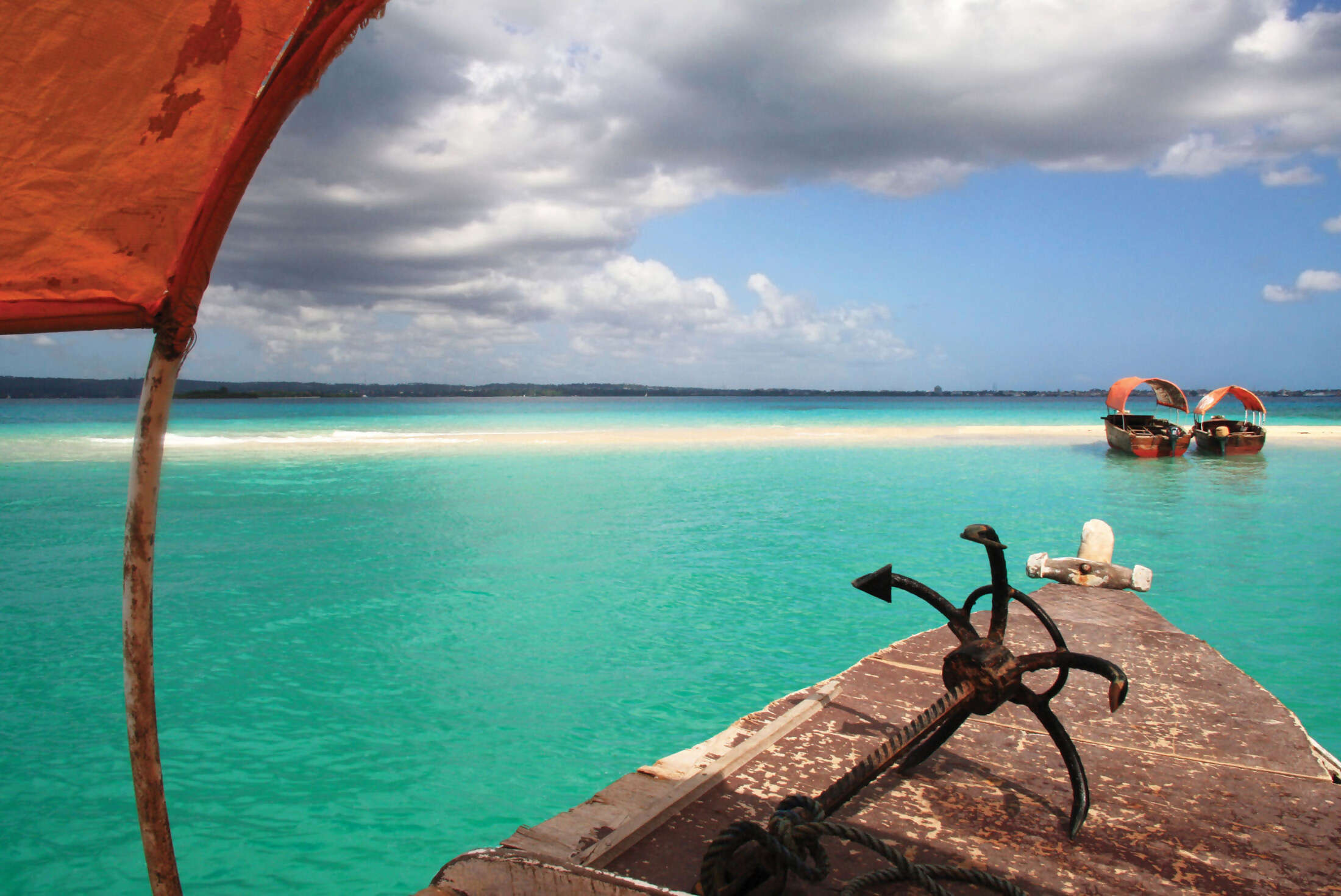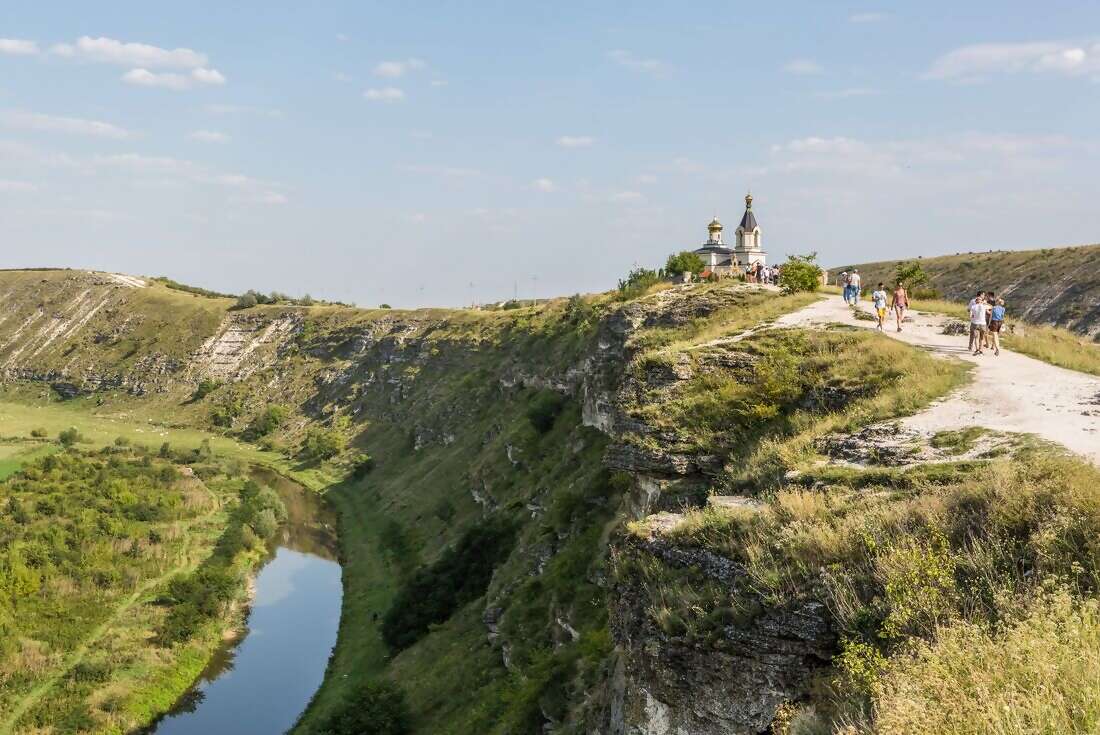 Venture out and witness vast landscapes, natural wonders, towns rich in cultural traditions and modern cities humming with life on this epic journey through Africa. Get ready for action, adventure and authentic experiences that will create lasting memories and endless photo opportunities. Start travelling through the waterways of Botswana and finish in the bustling streets and markets of Nairobi, travel through remote parts of the continent seeing amazing wildlife, verdant mountains, exotic beaches and simple villages along the way. Stop to witness the power of Victoria Falls and the sweeping beauty of the Serengeti, have close encounters with mountain gorillas and be warmed by the welcoming smiles of locals in Malawi. Camp on balmy beaches in Tanzania, trek through steamy rainforest and see cheeky chimps at play in Uganda. These are experiences to remember forever.
Venture out and witness vast landscapes, natural wonders, towns rich in cultural traditions and modern cities humming with life on this epic journey through Africa. Get ready for action, adventure and authentic experiences that will create lasting memories and endless photo opportunities. Start travelling through the waterways of Botswana and finish in the bustling streets and markets of Nairobi, travel through remote parts of the continent seeing amazing wildlife, verdant mountains, exotic beaches and simple villages along the way. Stop to witness the power of Victoria Falls and the sweeping beauty of the Serengeti, have close encounters with mountain gorillas and be warmed by the welcoming smiles of locals in Malawi. Camp on balmy beaches in Tanzania, trek through steamy rainforest and see cheeky chimps at play in Uganda. These are experiences to remember forever.Highlights
With gorilla permits included in the price of the trip, seek out the rare mountain gorilla on a trek through Uganda's steamy forests and spend an unforgettable hour in their presence
Support local conservation by visiting the Khama Rhino Sanctuary, the only place left in Botswana where both black and white rhinos reside
Camping on a remote island in the heart of the Okavango wilderness is an experience you’ll never forget. As night falls, the sounds of the African bush are like nothing else
Discover the magic of South Luangwa National Park, a highly concentrated arena of noble beasts and exotic wildflowers, on a dawn game drive
Chill out on the northern beaches of Zanzibar enjoying white sand and sparkling blue sea of the Indian Ocean
Explore the home of the Big Five beasts of Africa – the Serengeti, a wildlife arena like no other







- You will visit the following places:
-

Johannesburg
The City of Johannesburg Metropolitan Municipality is a metropolitan municipality that manages the local governance of Johannesburg, South Africa. It is divided into several branches and departments in order to expedite services for the city. Johannesburg is a divided city: the poor mostly live in the southern suburbs or on the peripheries of the far north, and the middle class live largely in the suburbs of the central and north. Around 20% of the city lives in abject poverty in informal settlements that lack proper roads, electricity, or any other kind of direct municipal service. Another 40% live in inadequate housing with insufficient municipal housing.
-

Selborne Park
Bulawayo is the second-largest city in Zimbabwe after the capital Harare. Located in Matabeleland, colloquially the city is also known by various names, these being the 'City of Kings', 'Skies', 'Bluez', 'Bulliesberg' or 'KoNtuthu ziyathunqa' – a isiNdebele phrase for "a place that continually exudes smoke". This name arose from the city's historically large industrial base. The majority of the Bulawayo's population belongs to the Ndebele ethnic and language group. For a long time in Zimbabwe's history Bulawayo was regarded as the industrial centre of Zimbabwe and the city served as the hub to the country's rail network with the National Railways of Zimbabwe headquartered there because of its strategic position near Botswana and South Africa. It is the nearest large city to Hwange National Park, Matobo National Park and Victoria Falls.
-

Harare
Harare (officially called Salisbury until 1982) is the capital and most populous city of Zimbabwe. Situated in the north-east of the country in the heart of historic Mashonaland, the city. The city was founded in 1890 by the Pioneer Column, a small military force in the service of the British South Africa Company, and named Fort Salisbury after the British Prime Minister Lord Salisbury. Salisbury was thereafter the seat of the Southern Rhodesian (later Rhodesian) government and, between 1953 and 1963, the capital of the Central African Federation. It retained the name Salisbury until 1982, when it was renamed Harare on the second anniversary of Zimbabwean independence. Harare is Zimbabwe's leading financial, commercial, and communications centre, and a trade centre for tobacco, maize, cotton, and citrus fruits. Manufactured goods include textiles, steel and chemicals, and gold is mined in the area. The city's suburbs include Borrowdale, Mount Pleasant and Avondale; the most affluent neighbourhoods are to the north. The University of Zimbabwe, the country's oldest university (founded in 1952), is situated in Mount Pleasant, about 6 km (3.7 mi) north of the city centre. Harare is home to the country's main Test cricket ground, Harare Sports Club, and to Dynamos F.C., Zimbabwe's most successful association football team.
-

Dar es Salaam
Dar es Salaam, a major city and commercial port on Tanzania’s Indian Ocean coast, grew from a fishing village. It was founded in 1862 by Sultan Seyyid Majid of Zanzibar on the site of the village of Mzizima. With its great atmosphere, mix of African, Muslim, and South Asian influences, picturesque harbour, beaches, chaotic markets, and historic buildings, it is well worth extending your stay beyond the time between flights. Present day Dar es Salaam's origins have been influenced by a myriad of sultans, the Germans and the British. The city started as a fishing village in the mid 19th century, is now Tanzania's largest city, and has become one of East Africa’s most important ports and trading centers.
-

Arusha
Arusha is a city in northern Tanzania. It is the capital of the Arusha Region and has a population of 1,288,088. It is surrounded by some of Africa's most famous landscapes and national parks. Situated below Mount Meru on the eastern edge of the eastern branch of the Great Rift Valley, it has a mild climate and is close to Serengeti, Ngorongoro Crater, Lake Manyara, Olduvai Gorge, Tarangire National Park, and Mount Kilimanjaro, as well as having its own Arusha National Park on Mount Meru. Arusha is a major international diplomatic hub. The city hosts and is regarded as the de facto capital of the East African Community. Since 1994, the city has also hosted the International Criminal Tribunal for Rwanda. It is a multicultural city with a majority African population, large Arab and Indian minorities, and many European and American ex-pats, engaged in diplomatic affairs and the fast-growing local tourist industry. Religions and denominations of Arusha's population are Catholic, Anglican, Jewish, Muslim, and Hindu.
-

Nairobi
Nairobi is the capital and largest city of Kenya is one of Africa's major cities.The name "Nairobi" comes from the Maasai phrase Enkare Nyirobi, which translates to "the place of cool waters". Popularly known as the "Green City in the Sun", it is surrounded by several expanding villa suburbs. During Kenya's colonial period, the city became a centre for the colony's coffee, tea and sisal industry. The gateway to some of the most stunning stretches of wilderness in the world, Nairobi is never short of tourists, even if most are simply passing through to the Masai Mara in the west or the beaches of Lamu and Malindi in the east.
-

Kampala
Kampala is the largest city and capital of Uganda. The city is divided into five boroughs that oversee local planning: Kampala Central, Kawempe Division, Makindye Division, Nakawa Division and Lubaga Division. The city is coterminous with Kampala District. Mutesa I, the Kabaka of Buganda, had chosen the area that was to become Kampala as one of his favorite hunting grounds. The area was made up of hills and wetlands. It was an ideal breeding ground for various game, particularly a species of antelope, the impala. The origin of the word impala is likely from the Zulu language in South Africa.